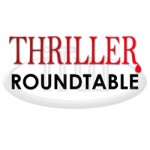

August 26 – Sept 1: “Oh, the plots, the sub-plots, and filler scenes. How to interweave them seamlessly?”
 “Oh, the plots, the sub-plots, and filler scenes. How to interweave them seamlessly?” This week join ITW members Steve Alten, Michelle Gagnon, Carole Nelson Douglas, Donna Del Oro, Douglas Corleone and Amy Christine Parker as they discuss the weaving of plots and sub-plots and fillers.
“Oh, the plots, the sub-plots, and filler scenes. How to interweave them seamlessly?” This week join ITW members Steve Alten, Michelle Gagnon, Carole Nelson Douglas, Donna Del Oro, Douglas Corleone and Amy Christine Parker as they discuss the weaving of plots and sub-plots and fillers.
~~~~~
 Amy Christine Parker writes full-time from her home near Tampa, Florida, where she lives with her husband, their two daughters, and one ridiculously fat cat. Visit her at www.amychristineparker.com and follow her on Twitter @amychristinepar
Amy Christine Parker writes full-time from her home near Tampa, Florida, where she lives with her husband, their two daughters, and one ridiculously fat cat. Visit her at www.amychristineparker.com and follow her on Twitter @amychristinepar
 Michelle Gagnon is the international bestselling author of books for teens and adults. Described as “The Girl with the Dragon Tattoo meets The Bourne Identity,” her YA technothriller DON’T TURN AROUND was recently nominated for a Thriller Award, and was selected as one of the best teen books of the year by Entertainment Weekly Magazine, Kirkus, Voya, and the Young Adult Library Services Association. The sequel, DON’T LOOK NOW, will be published on August 28th by HarperTeen. She splits her time between San Francisco and Los Angeles.
Michelle Gagnon is the international bestselling author of books for teens and adults. Described as “The Girl with the Dragon Tattoo meets The Bourne Identity,” her YA technothriller DON’T TURN AROUND was recently nominated for a Thriller Award, and was selected as one of the best teen books of the year by Entertainment Weekly Magazine, Kirkus, Voya, and the Young Adult Library Services Association. The sequel, DON’T LOOK NOW, will be published on August 28th by HarperTeen. She splits her time between San Francisco and Los Angeles.
 Steve Alten is the bestselling author of the MEG series, including MEG: HELL’S AQUARIUM. A native of Philadelphia, he earned a bachelor’s degree from Penn State, a masters from the University of Delaware, and a doctorate from Temple University. He is the founder and director of Adopt-An-Author, a free nationwide teen reading program used in thousands of secondary school classrooms to excite reluctant readers.
Steve Alten is the bestselling author of the MEG series, including MEG: HELL’S AQUARIUM. A native of Philadelphia, he earned a bachelor’s degree from Penn State, a masters from the University of Delaware, and a doctorate from Temple University. He is the founder and director of Adopt-An-Author, a free nationwide teen reading program used in thousands of secondary school classrooms to excite reluctant readers.
 USA TODAY bestselling and NEW YORK TIMES Notable author Carole Nelson Douglas never met a genre she didn’t like. Of her sixty published novels, forty are mystery and suspense titles, but her books have made mystery, science fiction/fantasy, and romance bestseller lists. She also writes the Delilah Street, Paranormal Investigator, noir urban fantasy series and was the first author to make a woman from the Sherlockian canon, Irene Adler, a protagonist, in eight acclaimed historical suspense novels. A former award-winning newspaper reporter, she thrives on a potent brew of research and imagination.
USA TODAY bestselling and NEW YORK TIMES Notable author Carole Nelson Douglas never met a genre she didn’t like. Of her sixty published novels, forty are mystery and suspense titles, but her books have made mystery, science fiction/fantasy, and romance bestseller lists. She also writes the Delilah Street, Paranormal Investigator, noir urban fantasy series and was the first author to make a woman from the Sherlockian canon, Irene Adler, a protagonist, in eight acclaimed historical suspense novels. A former award-winning newspaper reporter, she thrives on a potent brew of research and imagination.
 Donna Del Oro lives in Northern California and, when she’s not researching and writing, sings in the Sac Valley Chorus. To learn more about Donna, please visit her website.
Donna Del Oro lives in Northern California and, when she’s not researching and writing, sings in the Sac Valley Chorus. To learn more about Donna, please visit her website.
 Douglas Corleone is the author of contemporary crime novels published by St. Martin’s Minotaur. A former New York City criminal defense attorney, Douglas Corleone now resides in the Hawaiian Islands where he is at work on his next novel.
Douglas Corleone is the author of contemporary crime novels published by St. Martin’s Minotaur. A former New York City criminal defense attorney, Douglas Corleone now resides in the Hawaiian Islands where he is at work on his next novel.
- LAST GIRL MISSING with K.L. Murphy - July 25, 2024
- CHILD OF DUST with Yigal Zur - July 25, 2024
- THE RAVENWOOD CONSPIRACY with Michael Siverling - July 19, 2024
